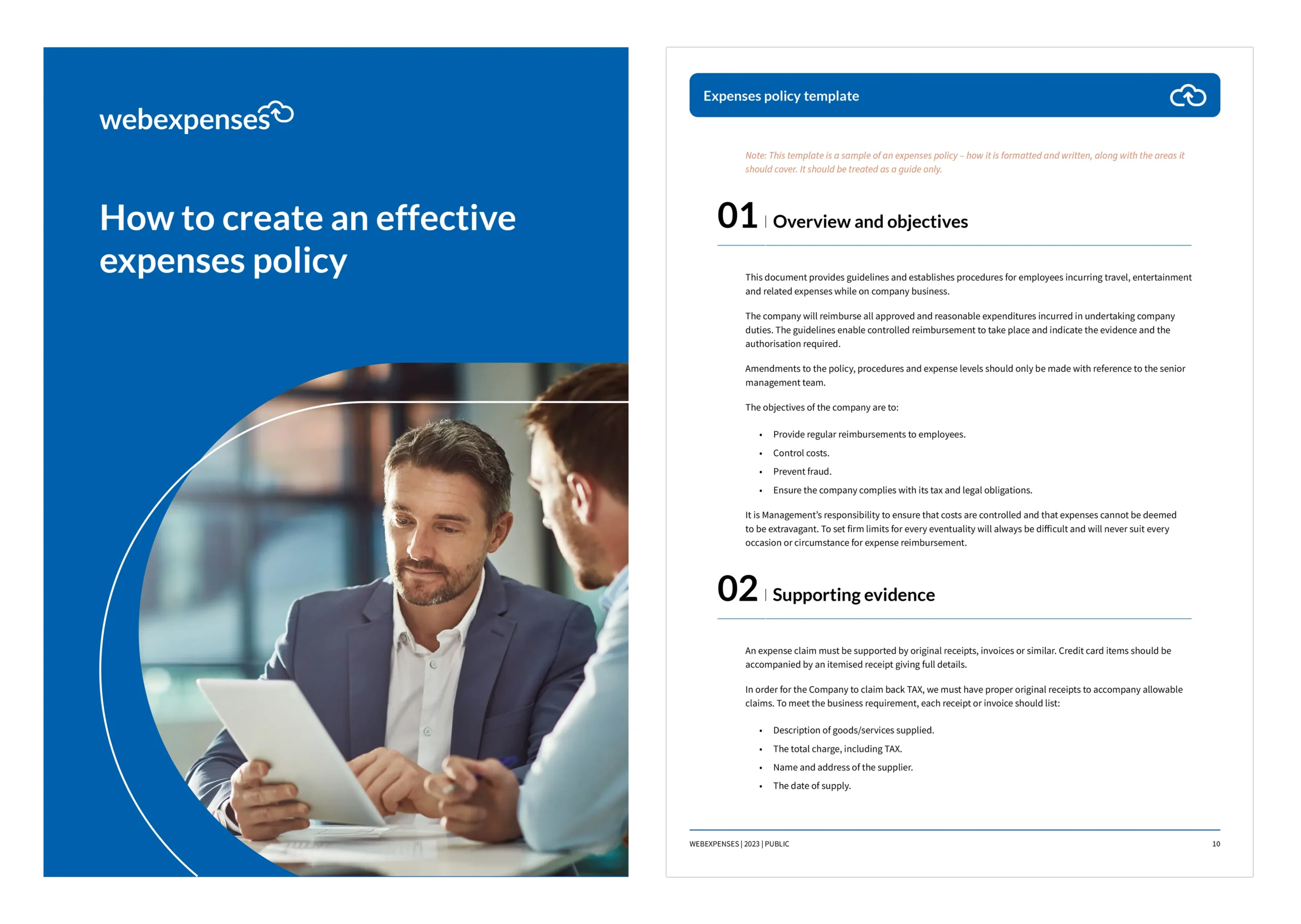How to Create an Effective Business Expenses Policy (With Template)
Introduction
You may already have an expense policy or you may be an organisation just starting to realise you need one.
Either way, this guide is for you:
It provides all the basic help and information you will need to create a robust expenses policy document.
It’s the foundation on which effective expense management is built.
What is an expense policy?
A business expense policy is a document that outlines how your organisation handles business-related expenses. It gives employees guidance on what can and can’t be claimed for.
It provides a guide to the process of making claims, as well as what happens if there are disputes over expenses.
"While there will always be a certain amount of discontent towards an expense policy, it is this perception of unfairness which is commonly used to justify expenses fraud. It's how employees, who normally consider themselves law-abiding citizens, can 'legitimise' the act of fiddling their expenses."

And once you’re ready to truly take control of your expenses, book a demo to try Webexpenses for yourself.
You may be surprised by how much time our easy-to-use platform could save you, and your team.
[ Request a demo ]

